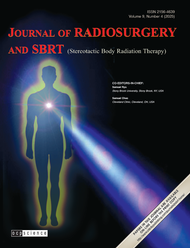- Home
- Journal Contents Downloads
- JRSBRT Downloads
- JRSBRT 9.4, p. 313-323
Product Description
After payment has been processed for your order of a digital copy (PDF) of this article, you will see a download link on your completed order page and also receive an email containing a download link. The links, which will enable you to download one copy of the article, will expire after 24 hours.
Optimizing prostate cancer SBRT: Acute GU toxicity outcomes of urethral delineation methods
Gargi Sharma, Susovan Banerjee, Tejinder Kataria, Richa Arunendu, Deepak Gupta, Shyam Bisht, Kushal Narang, Mayur Mayank, Sorun Shishak, Brij Bhushan and Susan K Abraham
Background and purpose: Precise urethral delineation is critical for minimizing genitourinary (GU) toxicity in prostate SBRT. This study compares acute toxicity outcomes between catheter-based and MRI-based urethral delineation methods.
Materials and methods: In this prospective study (2023-2024), 40 patients were randomized to catheter-based (n = 20) or MRI-based (n = 20) urethral delineation prior to SBRT. IPSS, QOL scores, and RTOG toxicity were assessed at baseline, treatment completion, and 1/3-month follow-ups. Dosimetric analysis included urethral BED and bladder V18 Gy.
Results: Both methods achieved comparable dosimetric precision (urethral BED: 128 ± 12 Gy catheter vs 130 ± 10 Gy MRI, p = 0.42). Acute grade ≥2 GU toxicity rates were similar (40% catheter vs 30% MRI, p = 0.54). The catheter group showed transient QOL deterioration likely attributable to procedural discomfort, with all patients returning to baseline by 3 months. Multivariate analysis identified urethral BED ≥130 Gy (OR: 2.1, p = 0.03) and bladder V18 Gy ≥ 30% (OR: 1.9, p = 0.04) as independent predictors of toxicity.
Conclusion: Catheter-based and MRI-based delineation demonstrate equivalent dosimetric and clinical outcomes in prostate SBRT. While catheterization may cause temporary discomfort, both methods are equally effective when adhering to dose constraints (urethral BED: <130 Gy, bladder V18 Gy < 30%). The choice between techniques may consider patient tolerance and institutional protocols, as both approaches provide excellent therapeutic outcomes.
Keywords: prostate SBRT, urethral delineation, MRI-based planning, catheter-based planning, genitourinary toxicity
 Loading... Please wait...
Loading... Please wait...








